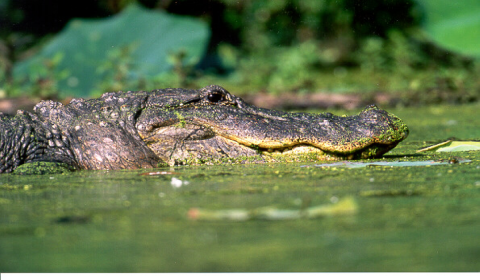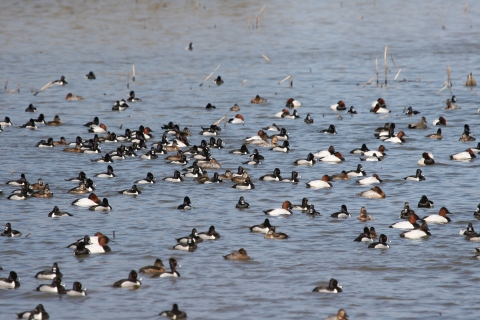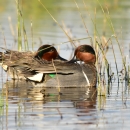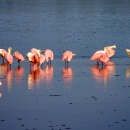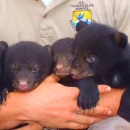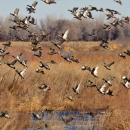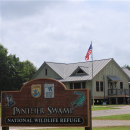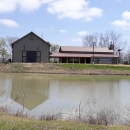About Us
Yazoo National Wildlife Refuge (NWR) is located in the heart of Mississippi’s Delta Region - 25 miles south of Greenville, and five air miles east of the Mississippi River in Washington County. This refuge is home to American alligators, migratory waterfowl, wading birds, state record white-tailed deer, squirrel, rabbit and raccoon.
The refuge is home-sweet-home to a healthy population of American alligators, a reptile species whose ancestry can be traced back to the age of dinosaurs. In early June, females are in locations easily observed by the public. The mother alligator remains close to the nest until the eggs hatch in late August or early September to guard it from predators. During this period, her protective instincts are heightened. None of our visitors have ever been hurt by an aggressive alligator, but if you should come across a nest, please keep your distance.
Known as one of the premier hunting refuges in the southeastern U.S., for years hunters have scheduled their vacations around the opportunity to hunt Yazoo National Wildlife Refuge’s white-tailed deer.
Our Mission
Each unit of the National Wildlife Refuge System is established to serve a statutory purpose that targets the conservation of native species dependent on its lands and waters. All activities on those acres are reviewed for compatibility with this statutory purpose.
Yazoo National Wildlife Refuge was established under the Migratory Bird Conservation Act (1929) and the Migratory Bird Treaty Act (1918). It was established in 1936 as one of the links in a chain of refuges that provide for the wintering needs of ducks and geese in the Mississippi Flyway.
Our History
In the early 1900's, natural habitat supplemented by agricultural crops provided excellent waterfowl hunting in and around the refuge area. Records indicate that ducks, geese and swans were abundant throughout the wintering season. Hunters came from as far away as New England to participate in the sport. Land acquisition began under authority of the Migratory Bird Treaty Act and Migratory Bird Hunting Stamp Act in 1936 with the initial purchase of 2,166 acres. In March 1937, an additional 639 acres were purchased with plans to acquire a total of 20,000 acres. The refuge remained unstaffed from 1936 until 1956. In 1959, the refuge office was built.
The Service was given permission to purchase additional land in 1960 under the provision of Section 5928 of the Mississippi Code of 1942, re-compiled by Governor Ross R. Barnett. Various tracts were purchased from individuals and hunting clubs until a total of 12,471 acres was reached on July 30, 1969. As land acquisition progressed, habitat management was diversified for mourning doves, wood ducks, Canada geese and colonial wading birds, along with endangered and resident species. A nucleus flock of wild turkeys was introduced in 1970. In 1992, the Service purchased the 470-acre Cox property bringing total refuge acreage to 12,941 acres.
Other Facilities in this Complex
Yazoo National Wildlife Refuge is one of nine refuges that make up the Theodore Roosevelt National Wildlife Refuge Complex. Each refuge in the complex plays vital role to conserving our nation's resources. A National Wildlife Refuge Complex is an administrative grouping of two or more Refuges, wildlife management areas or other Refuge conservation areas that are primarily managed from a central office location. Refuges are grouped into a complex structure structure
Something temporarily or permanently constructed, built, or placed; and constructed of natural or manufactured parts including, but not limited to, a building, shed, cabin, porch, bridge, walkway, stair steps, sign, landing, platform, dock, rack, fence, telecommunication device, antennae, fish cleaning table, satellite dish/mount, or well head.
Learn more about structure because they occur in a similar ecological region, such as a watershed or specific habitat type, and have a related purpose and management needs. Typically, a Project Leader oversees the general management of all Refuges within the complex and Refuge Managers are responsible for operations at specific Refuges. Supporting staff, composed of administrative, law enforcement, Refuge manager, biological, fire, visitor services, and maintenance professionals, are centrally located and support all Refuges within the complex.
Checkout the list below of the other Refuges within the Complex, and visit each one for new and different experiences!

